Research & Education Briefs
Pedestrian/Bicyclist Warning Devices and Signs at CTA Rail-Highway Grade Crossings
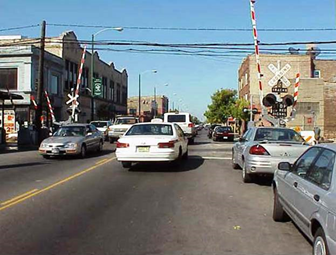
The number of pedestrian and bicycle fatalities at highway-rail grade crossings have increased over the past 10 years. This is contrary to a decrease in the number of train–vehicle collisions at highway-rail grade crossings during that same time period. The focus of this research was on pedestrians and cyclists who utilize legally authorized Chicago Transit Authority highway-rail crossings with pedestrian access to learn ways to improve pedestrian and cyclist safety there. Click here to read the detailed brief.
Railroad Car Wheel Contamination Detection
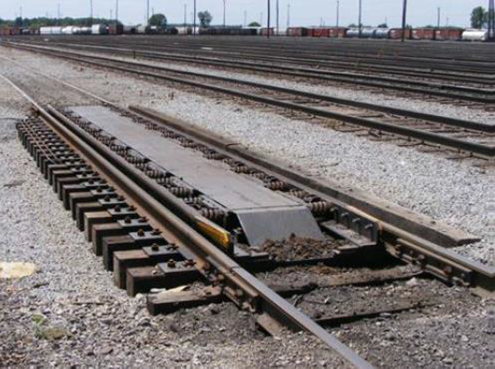
If contaminants are present on the train wheels during car classification, the retarders won’t operate effectively and the cars can blow apart couplers or even derail the train. The goal of this project is to detect contaminants on the train wheels in order to avoid damage during the recoupling process. A test stand was designed and built to measure the coefficient of friction for various contaminants at varying levels of application. Click here to read the detailed brief.
Canadian National Railway Cold Weather Defect Detection
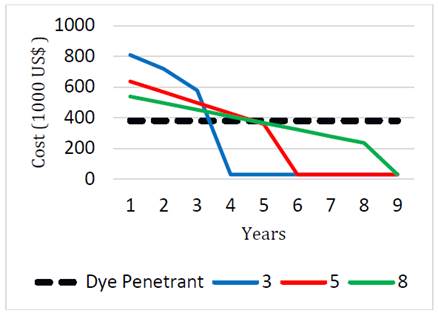
Modern railways use ultrasonic trucks to locate internal rail defects for removal. Once removed, Canadian National Railway goes one step further to insure that the entire defect was removed with the use of a dye penetrant. Unfortunately, this process has limitations due to adverse weather. This project looks at other detection options and ways to make improvements to the current one. Click here to read the detailed brief.
Lake State Railway Company, Saginaw Yard Improvements
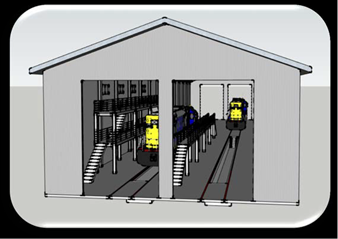
Rail industry senior design projects are an excellent way to provide students with an initial experience working with industry and the public to develop plans for future project work. During the 2015-16 school year, 32 senior civil and environmental engineering students conducted “Planning and Design Services for Improvements to the Lake State Railway Company (LSRC) Saginaw Yard” as their senior design project. Click here to read the detailed brief.
Rural Freight Rail and Multimodal Transportation Improvements- The Upper Peninsula of Michigan
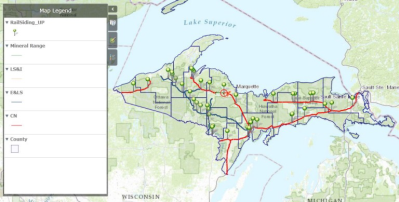
This study investigated the transportation system in the Upper Peninsula of Michigan (UP), concentrating on identifying challenges faced by rural freight rail service providers and shippers along light-density lines and on developing tools and methods that facilitate the current and future rail and multimodal transportation alternatives in the study area. Click here to read the detailed brief.
Railway Operations Class
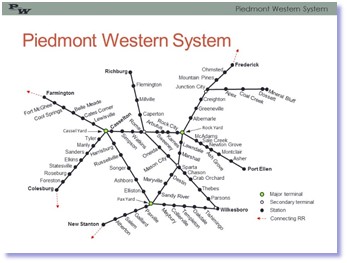
Increasing the number and diversity of rail focused courses is an important step in rebuilding America’s railway education infrastructure. This new course jointly developed by the Universities of Tennessee and South Carolina addresses railway operations. Click here to read the detailed brief.
Continuing Education for the Railway Industry
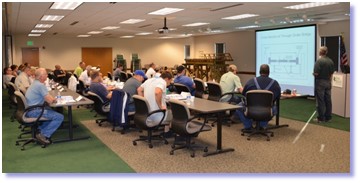
Workforce development is a critical issue in the railway industry, particularly for small railroad companies and industrial (plant) railroads. The University of Tennessee Center for Transportation Research offers a series of instructor lead continuing education courses on railway topics. Click here to read the detailed brief.
Performance Monitoring of Bridge-Track Transition Zones
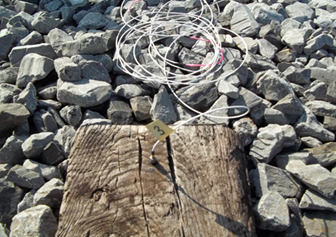
This report provides a description of the research performed by the University of Kentucky in conjunction with the University of Illinois at Urbana-Champaign that focuses on the behavior of the transition zone surrounding the bridge and track interface. Research has been conducted with attention to several concepts. First, attention has been given to the design of the track transition, and the material components that are used in the track construction. Second, consideration has been given to the design of the bridge abutments and any retaining wall(s). Third, the performance and response to train traffic of each transition has been monitored though the use of accelerometers strategically placed on the ends of ties. Click here to read the detailed brief.
Effect of Enhanced Trackbed Support on Railway/Highway At-Grade Crossing Performance
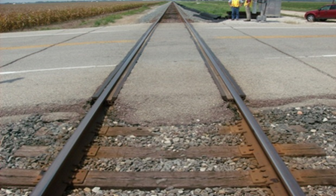
A growing number of public agencies and railroad companies have mandated the use of asphalt underlayments on select crossings, normally on heavy traffic/tonnage crossings that have weak support, as evidenced by track pumping, ballast fouling, and track settlement. The report concludes by summarizing how eleven public agencies and railroad companies, spread across the United States, currently implement asphalt underlayment. Click here to read the detailed brief.
KENTRACK 4.0: A RAILWAY TRACKBED STRUCTURAL DESIGN PROGRAM
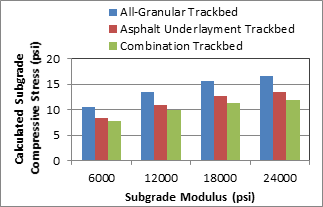
The KENTRACK program is a finite element based railway trackbed structural design program that can analyze trackbeds having various combinations of all-granular and asphalt-bound layered support. It is applicable for calculating compressive stresses at the top of subgrade and tensile strains at the bottom of the asphalt layer for trackbeds containing an asphalt layer. The properties of performance graded (PG) asphalt binders and the Witczak E* predictive model were incorporated in the 4.0 Version of the program. Click here to read the detailed brief.
Railway/Highway At-Grade Crossing Surface Rehabilitation Manual: Recommendations and Guides
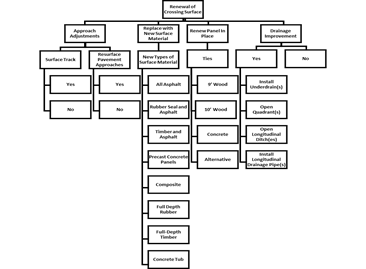
Railway/Highway At-Grade Crossing Surface Management involves selecting the most cost-effective rehabilitation technique that will provide safe, smooth, high performance, long-life, serviceable crossings for the motoring public. This report functions as a manual that offers step-by-step guidance to see a project from its planning stages through to its implementation and post-construction management. Click here to read the detailed brief.
In-track Pressure Testing at Tie-Ballast Interface using Pressure Cells
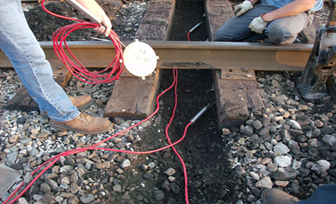
The purpose of this research project is to determine in-track pressure magnitudes at the tie-ballast interface using a locomotive and earth pressure cells. A method was developed for measuring distributions of railway trackbed pressure magnitudes at the tie-ballast interface using earth pressure cells placed directly under the tie along its length. A locomotive was used to provide typical pressures at the wheel/rail interface. The method was determined to provide consistent and repeatable results. Click here to read the detailed brief.
Fine Scale Measurement of Ballast-Tie Pressure Distribution
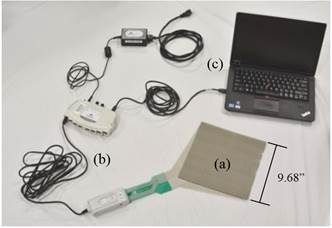
This investigation involves the measurement of fine-scale pressures at the ballast-tie interface of conventional ballasted track. To further understand the forces that act at this interface, the use of Matrix Based Tactile Surface Sensors is employed to measure a more fine-scale pressure distribution at the ballast-tie interface, characterized by individual ballast particle contact points and non-uniform pressure distributions. In partnership with Transportation Technology Center, Inc., laboratory ballast box testing and in-track testing at the Facility for Accelerated Service Testing were conducted. Click here to read the detailed brief.
Intermodal and Multi-Modal Education at the University of Kentucky

In addition to the Railway Facilities Design and Analysis course (CE 533), the University of Kentucky Civil Engineering Department currently offers a course in Railway Operations and Multi-Modal Transportation (CE 433). The operational aspects necessary for the efficient transportation of freight and passengers by rail have always been a primary focus of the course. Over the past several years, however, the course has incorporated material related to intermodal transportation to reflect the growing importance of intermodal shipping in the United States and internationally. Click here to read the detailed brief.
Railway/Highway At-Grade Crossing Surface Management: An Overview

This review focuses on administrative regulations and state statutes that inform the renewal of railway/highway at-grade crossings. A number of states have successfully developed standard at-grade crossing management practices. Comprehensive information on crossing renewal was obtained from several states, and detailed descriptions are included of the six effective state-level programs, specifically those in Illinois, Indiana, Iowa, Georgia, Michigan, and West Virginia. Click here to read the detailed brief.
Amtrak’s Productivity in the Northeast Corridor: Past and Future
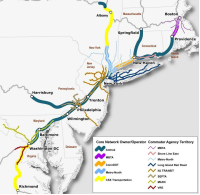
Productivity analysis, the relationship between outputs and inputs in any given process, is used to evaluate the performance of the main passenger rail services in the Northeast Corridor during FY 2002--‐2012 and to make inferences about high--‐speed rail for the next 30 years. Click here to read the detailed brief.
Capacity Challenges on the California High-Speed Rail Shared Corridors: How Local Decisions Have Statewide Impacts

In 2012, as a cost-control measure and in response to local opposition in the San Francisco Bay Area, the California High-Speed Rail Authority (CHSRA) adopted a "blended system" at the north and south bookends of the planned first phase of its high-speed rail line. The decisions made on the local blended corridor level will affect both the financial viability of the overall project and the quality of service experienced by customers across the entire California rail system. Click here to read the detailed brief.
Consequence Evaluation of Liquid Hazardous Material Release Using GIS Flow Modeling
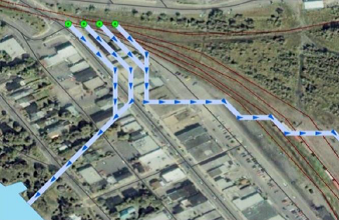
Increasing petroleum crude oil traffic by rail in North America and several recent severe release incidents highlight the need to further improve railroad transportation safety. Accurate estimation of the consequence of a release incident is key element in risk assessment. Previous methodologies may be overly simplistic or not appropriate to model liquid hazardous material releases. This research aims to address this gap and provide a specific methodology for evaluating the consequence of liquid hazardous material releases. Click here to read the detailed brief.
Shared Rail Corridor Adjacent Track Accident Risk Analysis

There are several safety concerns associated with operating passenger and freight trains on shared-use rail corridors (SRC). Adjacent track accident (ATA) mainly refers to a train accident scenario where a derailed equipment intrudes adjacent tracks, causing operation disturbance and potential subsequent train collisions on the adjacent tracks. This study presents a semi-quantitative risk analysis model to evaluate the ATA risk incorporating various factors affecting train accident rate, intrusion rate, train presence rate, and accident consequences. Click here to read the detailed brief.
Causal Analysis of Passenger Train Accidents on Freight Rail Corridors

A number of economic, technical and political factors have limited the development of new, dedicated, very-high-speed rail systems in North America. Consequently, most, near-term development of improved or expanded passenger rail service in the U.S. involve use of existing railroad infrastructure or rights of way. Comprehensive understanding of train accidents on shared-use corridors is critical for rational allocation of resources to reduce train accident risk. This study presents the initial results to understand what the most important contributors are to the risk of train accidents on shared-used rail corridors. Click here to read the detailed brief.
Nonlinear Track-Railroad Vehicle Interaction

This investigation describes a new nonlinear formulation based on the absolute nodal coordinate formulation (ANCF) for modeling the dynamic interaction between rigid wheels and flexible rails. The generalized forces and spin moments at the contact points are formulated in terms of the absolute coordinates and gradients of ANCF finite elements used to model the rail. To this end, a new procedure for formulating the generalized ANCF applied moment based on a continuum mechanics approach is introduced. Click here to read the detailed brief.
Automatic Method for Detecting and Categorizing Railcar Wheel and Bearing Defects

This project will focus on automatically detecting flat-spotted wheels from thermal imagery using computer vision methods. In addition to that, we introduce a novel algorithm to detect hot bearings. Click here to read the detailed brief.
Elasto-Viscoplastic Modeling of Rail Ballast and Subgrade

Settlement of Rail Ballast and Subballast is a major issue in the rail industry. In this research, we develop a three-invariant soil model capable of simulating the settlement of soil under repeated loads. This model can be incorporated into finite element analysis of soils under the dynamic motions of trains. Click here to read the detailed brief.
Coupled Rail-Ballast-Subgrade Analysis of Train Dynamics

In this project, we develop an integrated multibody dynamics and finite element model that include wheel-rail contact and deformation of the rail, fasteners, ties, ballast, sub-ballast and subgrade. Click here to read the detailed brief.
Structural Adhesive Behavior – Experimental and Computational Study

In this brief, an experimental and computational study aiming to investigate the structural adhesive behavior at different loading scenarios is presented. The objectives of this research are: i) investigate the behavior of structural adhesive by characterizing their mechanical properties, and ii) establish a representative material model that can mimic their behavior and can be used in numerical models for computational studies. Click here to read the detailed brief.
Switch Geometry Modeling using ANCF

The objective of this work is to develop a new finite element based procedure for representing surface geometry in MBS contact problems. This procedure ensures a certain degree of continuity at the element interface, thereby allowing for more accurate predictions of kinetics results that include the contact forces. Click here to read the detailed brief.
Study of Liquid Sloshing using a Multibody Approach

The objective of this investigation is to develop a total Lagrangian liquid sloshing solution procedure based on finite element floating frame reference (FFR) formulation and absolutely nodal coordinate formulation (ANCF). Click here to read the detailed brief.
New Semester Course in Railway Terminal Design & Operations

In the new Railway Terminal Design & Operations course (CEE 598 RTD) developed as a NURail education project, students learn details of the design, operations planning, management, and optimization of the terminal facilities required for the railway network to function as an efficient freight transportation system. The focus is on design of classification yards, intermodal facilities and bulk terminals, and how these facilities are organized into a network to provide different types of freight transportation service by rail. Click here to read the detailed brief.
"Grow Our Own" Minority STEM Initiative: Partnering in Outreach
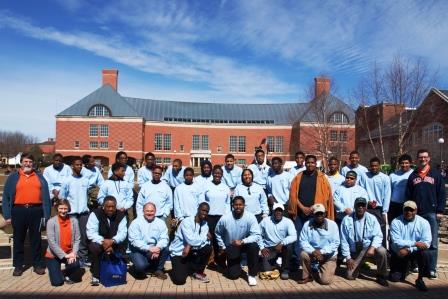
The railroad programs at the University of Illinois at Urbana-‐Champaign and Michigan Technological University are supporting efforts led by Hanson Professional Services, a civil engineering consulting firm headquartered in Springfield, IL, to expose underrepresented groups to railway engineering and “grow our own” next generation of civil engineering leaders. Program coordinators at Hanson work with nearby schools and local organizations to identify minority students in the Springfield community with an interest in STEM topics. Students are then matched with appropriate programs to foster their interest. Click here to read the detailed brief.
Summer Youth Program in Rail and Intermodal Transportation
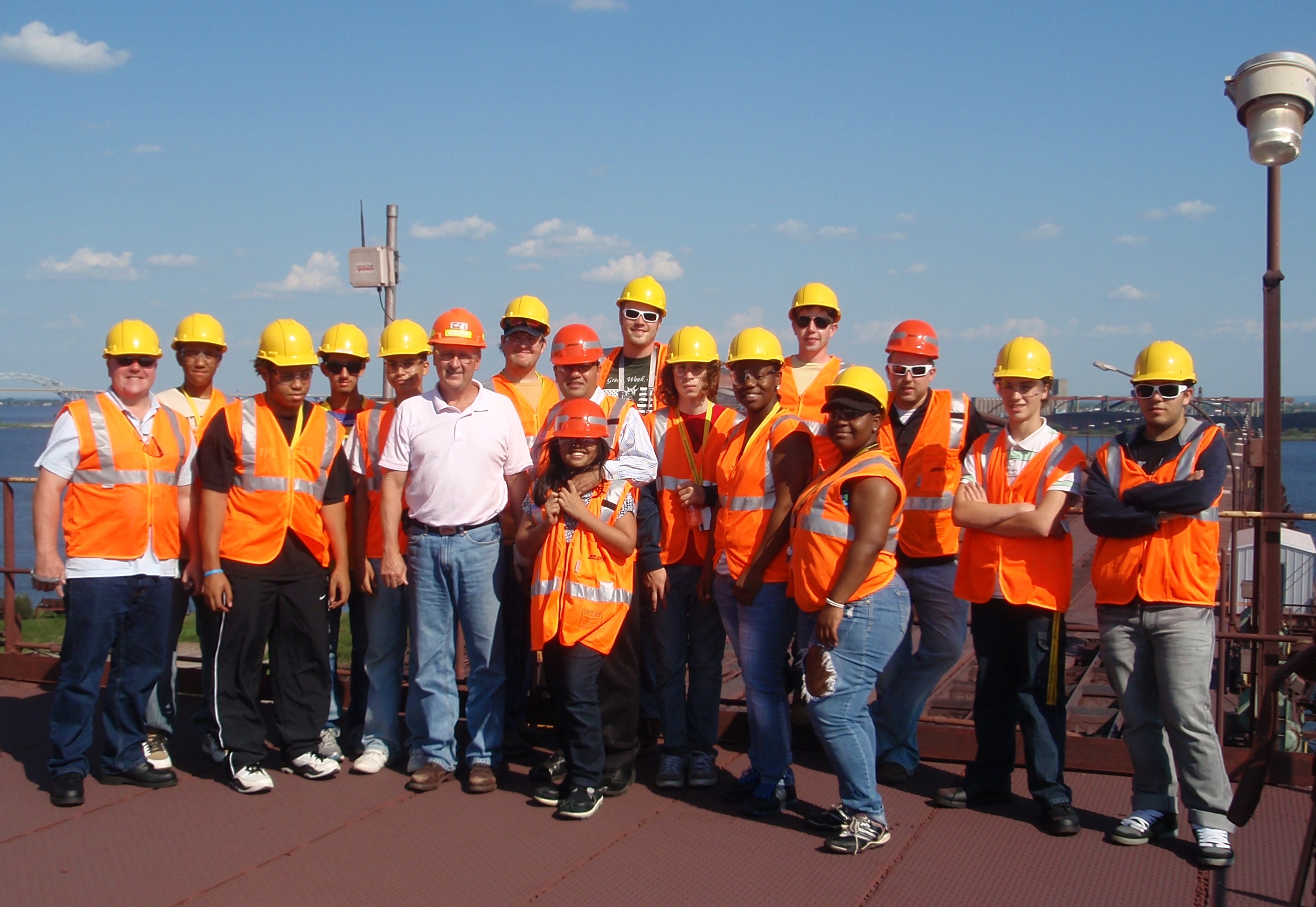
Since 2010, Michigan Technological University has offered a Summer Youth Program (SYP) in Rail and Intermodal Transportation. The program hosts a diverse group of students in grades 9-11 representing 17 states. The structure of the program consists of classwork, tours, and hands-on activities. The mission statement of the program is "a collaboration to attract a new generation." Click here to read the detailed brief.
Railroad Engineering Education Symposium (REES) 2012
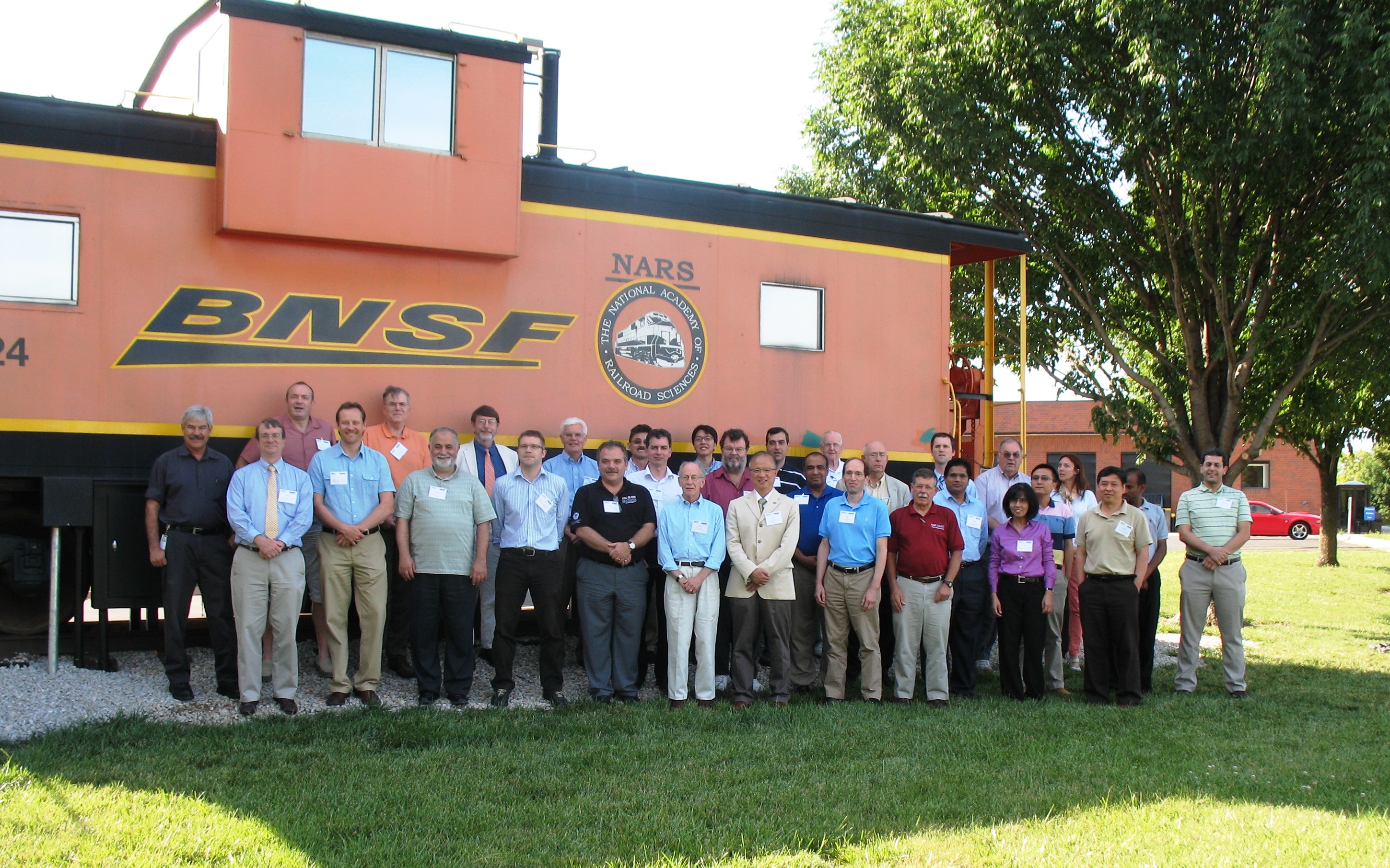
The Railway Engineering Education Symposium (REES) is intended to foster the participation of university faculty in railway engineering with the goal of encouraging and supporting their interest in adding railway engineering content to their engineering courses and curricula. REES 2012 was held June 11-13, 2012 in Overland Park, KS at the Johnson County Community College (JCCC). REES 2012 presented basic railway education materials, but also added more advanced material targeted toward professors who returned to REES to deepen their understanding of the railroad industry. Click here to read the detailed brief.
Railroad Projects at Rose-Hulman Institute of Technology

Three rail related projects were taken on as part of the year-long Senior Design Capstone class. Two rail projects were also part of the Freshman Design class. During the spring of 2014 students in the Railroad Engineering class designed and constructed a 60 foot section of track at the Wabash Valley Railroaders Museum. The track is used to display a WWII Pullman Troop Sleeper car. Click here to read the detailed brief.
Rail Highway Grade Crossing Roughness Quantitative Measurement Using 3D Technology

This research reports on the development of an accurate, low cost and readily deployable sensor capable of rapidly collecting a 3D surface model of a rail crossing in its present state. This is seen as a first step towards automating the crossing inspection process, ultimately leading to the quantification and estimation of future performance of rail crossing. Click here to read the detailed brief.
Quantifying Rail-Highway Grade Crossing Roughness: Accelerations and Dynamic Modeling

Quality of surface is an important aspect affecting both the safety and performance of rail-highway grade crossings. No quantitative method currently exists to assess the condition of rail crossings in order to evaluate the performance of crossings and set a quantitative trigger for their rehabilitation. This research reports on the use of LiDAR to collect a 3D surface point cloud as input to a customized vehicle dynamic model. Click here to read the detailed brief.
Understanding Crude Oil Transport Strategies in North America
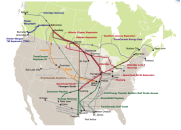
Productivity analysis, the relationship between outputs and inputs in any given process, is used to evaluate the performance of the main passenger rail services in the Northeast Corridor during FY 2002--‐2012 and to make inferences about high--‐speed rail for the next 30 years. Click here to read the detailed brief.
The Impact of Amtrak Performance in the Northeast Corridor

The performance of Amtrak’s Acela and Regional services in the Northeast Corridor is a topic that, while frequently discussed as substandard by some travelers, has received minimal attention in the compendium of open source research literature. This brief focuses on Amtrak’s Acela and Regional travel time performance in the last ten years (2005 to 2014). Click here to read the detailed brief.
Cross-Infrastructure Learnings for Alternative Bridge System Designs – A Case Study on the Hybrid Composite Bridge System
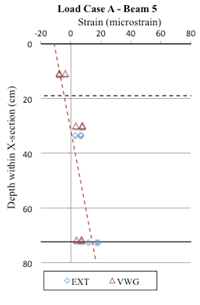
Compared to traditional materials, the hybrid composite beam (HCB) system is lighter in weight and has great potential as a sustainable design solution due to the protective FRP outer shell. This investigation was limited to the evaluation of the in-service performance of an in-service HCB bridge constructed in Virginia. Click here to read the detailed brief.
Wayne Industries Site Expansion
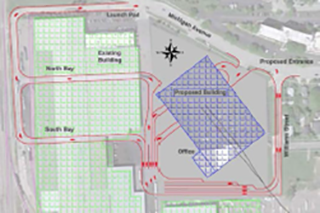
Wayne Industries provides warehousing and transportation of steel coils and aluminum primarily for the automotive industry. They approached the Michigan Tech Rail Transportation Program with a request to develop alternatives for expanding their steel warehousing operation in Wayne, MI to better handle changing operational needs. Click here to read the detailed brief.
RFID in Railway Operations
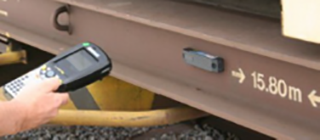
The purpose of the Radio Frequency Identification (RFID) technology research project is to prepare a comprehensive report covering RFID technology and current use in the rail industry. Click here to read the detailed brief.
Rail Shunt Connection Test System
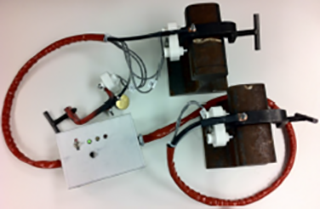
This project explores the key features and practical implications of a device by which the effectiveness of a rail shunt can be measured. Click here to read the detailed brief.
Highway-Rail Grade Crossing Surface Material Performance
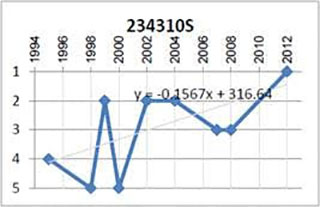
Performance of the surface material at grade crossings is an ongoing challenge. This study reviewed the literature on grade crossing surface materials from MDOT. The team found that data currently available was not adequate to perform credible analysis of the situation, and developed a recommendation for a new grade crossing data collection process. Click here to read the detailed brief.
Rail Car Coupler
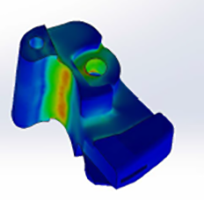
The current Janney railcar coupler has not seen many changes for a long time. The main objective of this project was to increase the lifespan of the coupler through design and material changes, without affecting the freight car or train operations. Click here to read the detailed brief.
Center Beam to Frac Sand Railcar Conversion
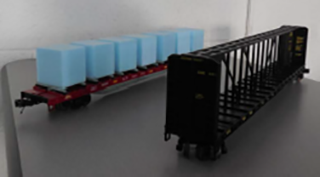
The demand for Center Beam railcars has reduced in recent years. Recommissioning the cars for a different function with feasible modifications would financially benefit the industry. Students at Michigan Tech have found they can be converted into flat cars that could carry frac-sand for the growing Midwestern oil and natural gas industry. Click here to read the detailed brief.
Intelligent Railroad Crossing Maintenance Jumper
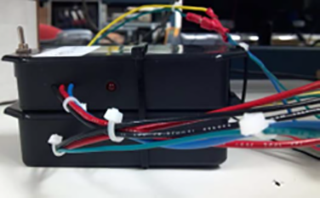
Jumper cables are used to disable crossing signals for maintenance. In rare occasions, they may be forgotten due to human error, and the disabled crossing signals pose a risk to human life. The goal of this project is to design a device with jumper cables or signal crossing devices to lessen the impact of human error. Click here to read the detailed brief.